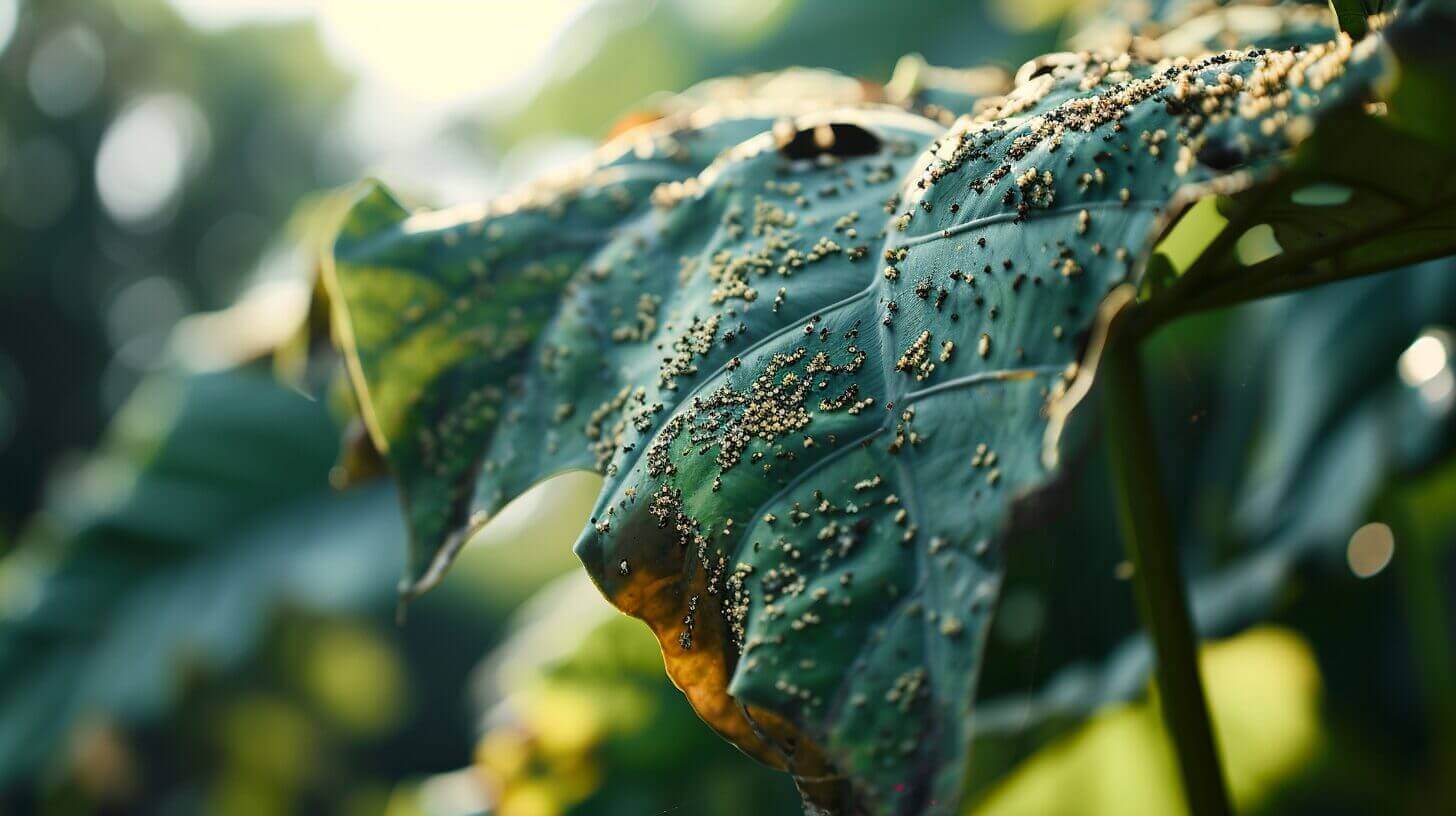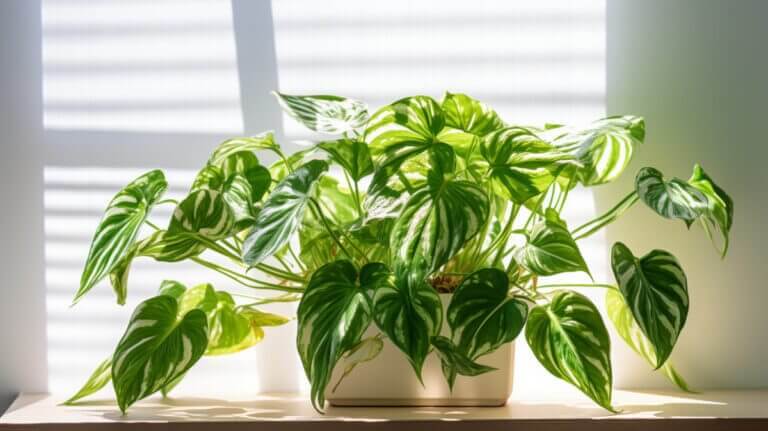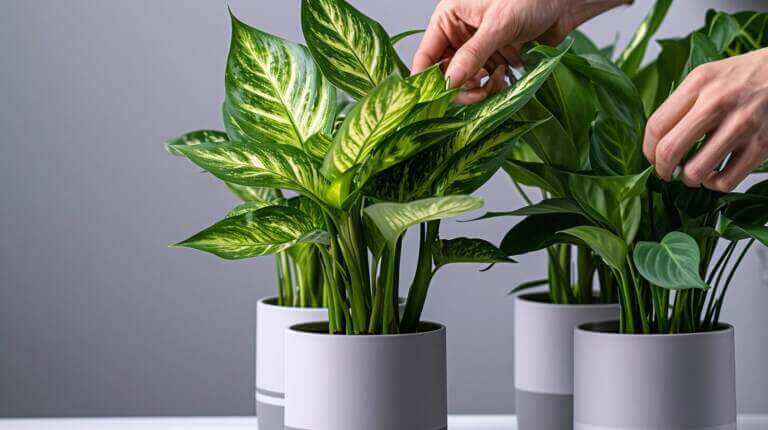What Animals Eat Elephant Ear Plants: Pests and Control Methods
As a professional copywriting journalist, I’ve had the opportunity to research and write about various plant species and the pests that can threaten their growth. In this article, we will be delving deep into the topic of elephant ear plants and the animals that eat them. We’ll also discuss effective pest control methods to keep these majestic plants thriving.
Elephant ear plants are a tropical perennial with large, showy foliage that adds a touch of exotic beauty to any garden or indoor space. Unfortunately, these plants are prone to pest infestations, which can cause significant damage if left unchecked.
Key Takeaways:
- Elephant ear plants are susceptible to pest infestations
- Pests can cause significant damage if left unchecked
- Effective pest control methods are crucial for the health of these plants
Identifying Common Pests on Elephant Ear Plants
Elephant ear plants are susceptible to a range of pests that can cause significant damage. Identifying these pests early is crucial to prevent further harm to your plants. Here are some of the most common pests that infest elephant ear plants:
Bugs on Elephant Ear Plants
There are several types of bugs that can infest elephant ear plants. Some of the most common include:
- Mealybugs: These tiny white bugs feed on the sap of the plant and produce a white, waxy residue that can be mistaken for cotton.
- Spider Mites: These tiny bugs are difficult to spot without a magnifying glass. They create spider-like webs on the plant and suck the sap from the leaves.
Tiny Bugs on Elephant Ear
In addition to mealybugs and spider mites, there are other small pests that can infest elephant ear plants. These include:
- Thrips: These minuscule insects are less than 1/25 of an inch long and are difficult to spot without magnification. They suck the sap from the leaves and cause significant damage.
- Scale Insects: These insects can range in size from 1/16 to 1/4 inch in diameter and look like small bumps on the plant.
Aphids on Elephant Ears
Aphids are another common pest that can infest elephant ear plants. These tiny insects feed on the sap of the plant and can cause the leaves to curl and distort.
“Identifying these pests early is crucial to prevent further harm to your plants.”
Now that we have discussed some of the most common pests that infest elephant ear plants, let’s move on to methods for controlling and preventing pest infestations in the next section.
Pest Control Methods for Elephant Ear Plants
When it comes to controlling plant pests, there are several methods that can be effective, including sprays and neem oil. It is important to choose the right method for the type of pest infesting your elephant ear plant.
Spray
Spraying can be an effective method for controlling pests on elephant ear plants. There are different types of sprays available, including insecticides and fungicides. When using a spray, it is important to follow the instructions carefully and apply it evenly to all parts of the plant.
It is also important to note that some sprays may not be suitable for certain plants or may cause harm to beneficial insects, so it is important to choose the right product for your elephant ear plant’s specific needs.
Neem Oil
Neem oil is a natural pesticide derived from the seeds of the neem tree. It works by disrupting the feeding and reproduction of insects and can be effective in controlling a variety of plant pests, including aphids and mites.
When using neem oil, it is important to dilute it according to the instructions on the label and apply it evenly to all parts of the plant. It may also need to be reapplied after a certain period, depending on the severity of the pest infestation.
Other Methods
In addition to sprays and neem oil, there are other methods that can be effective in controlling plant pests. These include:
- Removing infected plant parts: If a part of the plant is infected, it is important to remove it as soon as possible. This can help prevent the spread of pests and diseases to other parts of the plant.
- Encouraging natural predators: Ladybugs, lacewings, and other beneficial insects can help control pests by eating them. Planting flowers and herbs can attract these insects to your garden.
- Moving your plant: If you have an indoor plant, moving it outdoors or vice versa can help prevent pest infestations. This is because different pests are attracted to different environments.
Using a combination of these methods may be necessary to effectively control pests on your elephant ear plant.
Tips for Elephant Ear Plant Care
Caring for elephant ear plants is essential to ensure their growth and vibrancy. Here are some tips to keep your plants healthy:
- Watering: Elephant ears require moist soil, so be sure to water them regularly and keep the soil from drying out. However, overwatering can lead to root rot, so make sure to strike the right balance.
- Lighting: These plants thrive in bright, indirect sunlight. Too much direct sunlight can burn their leaves, so avoid placing them in harsh, sunny areas.
- Fertilizing: Use a balanced fertilizer every two weeks during the growing season to provide essential nutrients for growth.
- Propagation: Elephant ears can be propagated by dividing the rhizome. This not only creates new plants but can also help control their size.
Following these care tips can help your elephant ears grow strong and lush. Proper care leads to healthier plants that are more resistant to pests and diseases.
Remember to handle your plants with care. Elephant ear leaves are fragile, and rough handling can cause damage. Be gentle when pruning or propagating your plants to avoid breaking their leaves.
Protecting Elephant Ear Leaves from Damage
One of the most common problems that elephant ear plants face is damage to their leaves. This damage can be caused by a variety of factors, including insects and fungal leaf blight. It is important to protect the leaves of your elephant ear plant to ensure its health and longevity.
Identifying Insect Damage on Elephant Ear Leaves
Elephant ear leaves are often targeted by insects, which can cause significant damage if not properly addressed. Insects like spider mites, mealybugs, and thrips can all be harmful to your plant’s foliage.
Spider mites are tiny pests that can cause yellow or white spots on the leaves of your elephant ear plant. You may also notice webbing on the underside of the leaves. Mealybugs are small, white insects that leave a powdery residue on the leaves, while thrips are black, slender insects that feed on the leaves and flowers of your plant.
Preventing Fungal Leaf Blight
Fungal leaf blight is another common issue that elephant ear plants face. This disease can be caused by a variety of fungi and can lead to yellow or brown spots on the leaves. It is important to prevent fungal leaf blight by providing your plant with proper ventilation and avoiding overwatering. Additionally, remove any infected leaves immediately to prevent the spread of the disease.
Protecting Your Elephant Ear Leaves
To protect your elephant ear leaves from damage, there are a few strategies you can follow. First, inspect your plant regularly for any signs of insect damage or fungal leaf blight. If you notice any issues, isolate the plant from other foliage to prevent the spread of pests or disease. Additionally, be careful not to damage the leaves when watering your plant, and avoid leaving standing water on the leaves, which can lead to fungal growth.
Another effective strategy for protecting your elephant ear leaves is to use organic insecticides and fungicides. Products like neem oil can help to control insect pests, while copper fungicides can prevent the spread of fungal diseases.
Managing Pest Infestations Indoors and Outdoors
If you have elephant ear plants, you can grow them either indoors or outdoors, depending on your preference. If you opt to keep them indoors, make sure to place them near a window to ensure they get enough light. If you keep them outdoors, choose a spot that is partially shaded to protect them from direct sunlight.
Regardless of where your plants are situated, it is crucial to manage pest infestations effectively. Here are some tips:
- Identify the pests: If you suspect that your plant is infested, take a close look to identify the pests. Different pests require different treatment methods.
- Isolate your plant: If you have multiple plants, move the infected one away from the others to prevent the infestation from spreading.
- Use insecticidal soap: Insecticidal soap is an effective and environmentally friendly way to treat infestations on both indoor and outdoor elephant ear plants. Spray the solution onto the leaves, stems, and buds of the plant, making sure to cover all the affected areas.
- Apply neem oil: Neem oil is also an effective treatment for elephant ear plants infested with pests. Dilute the oil with water and apply it to the plant using a spray bottle. This will eliminate the pests and prevent further infestations.
- Use beneficial insects: Introducing beneficial insects like ladybugs and lacewings can help control pests on your outdoor elephant ear plants. These insects feed on pests like aphids and mites and can help keep your plants healthy.
If you have elephant ears in containers, it is essential to ensure that the container is not too small for the plant size. Small containers can stress the plant and make it more susceptible to pest infestations and disease. Make sure to choose a container that is at least twice the size of the plant’s root ball. Additionally, proper drainage is essential to prevent the plant from sitting in water, which can lead to root rot.
Overall, managing pest infestations is essential to keeping your elephant ear plants healthy and thriving. By following these tips, you can effectively control pests and ensure that your plants remain beautiful and vibrant.
Preventing Future Pest Problems
As a responsible plant parent, it’s essential to take proactive measures to prevent future pest problems. One effective way to do this is by inspecting your plant regularly to identify any signs of pest infestation. Check all plant parts, including leaves, stems, and soil, for any abnormalities or insects.
Infected plant parts should be removed immediately to prevent the spread of pests. Be sure to dispose of these parts in a sealed bag to avoid further contamination. It’s also a good idea to keep your plant in a separate area if you suspect it may be infected to prevent other plants from getting affected.
If you notice that past infestations are recurring, consider moving your plant to a new location. Pests can lay dormant in soil or on plant parts, so changing their surroundings can help control further damage.
Using Natural Pest Deterrents
Another way to prevent future infestations is by using natural pest deterrents. There are several options to choose from, such as:
- Neem oil: This plant-based oil can act as a natural insecticide, repelling and killing pests on contact.
- Ladybugs: These cute and beneficial insects love to eat aphids and other plant pests. Consider releasing ladybugs in your garden to control pest populations.
- Companion planting: Some plants act as natural insect repellents for others. For example, planting marigolds near your elephant ear plants can deter pests from harming them.
By taking these preventive measures, you can ensure that your elephant ear plants remain healthy and free from pests. Remember to inspect, remove infected plant parts, and use natural deterrents to prevent future infestations.
Dealing with Diseases and Other Plant Issues
While pests are a common problem for elephant ear plants, they are not the only issue that can arise. Diseases can also affect these plants and cause damage. Two common diseases that can impact elephant ear plants are taro diseases and colocasia diseases.
Taro Diseases
Taro plants are often affected by fungal diseases that can lead to yellowing of the leaves, leaf spots, and blight. To prevent taro diseases, it is essential to maintain proper plant care, including adequate watering, pruning, and removing infected leaves. Fungicide treatment can also be effective in controlling taro diseases.
Colocasia Diseases
Similarly, colocasia plants can also be susceptible to fungal diseases. Symptoms of colocasia diseases include yellowing or browning of the leaves, stunted growth, and rotting of the corm. Proper plant care can help prevent colocasia diseases, including avoiding overwatering, providing proper drainage, and removing infected leaves. Fungicide treatment can also help control the spread of disease.
In addition to pests and diseases, other plant issues can arise, such as nutrient deficiencies or improper growing conditions. Proper diagnosis and treatment of plant issues can help ensure the health and longevity of elephant ear plants. Treatment options for plant pests and diseases include neem oil, fungicides, and insecticides.
FAQ
What animals eat elephant ear plants?
Some common animals that may eat elephant ear plants include deer, rabbits, and squirrels.
How can I control pests on my elephant ear plants?
Effective methods for controlling pests on elephant ear plants include using insecticidal sprays, introducing beneficial insects, and regularly inspecting your plants for signs of infestation.
What are some common pests that can infest elephant ear plants?
Common pests that can infest elephant ear plants include aphids, spider mites, and thrips.
How do I identify bugs on my elephant ear plants?
Look for signs such as tiny bugs crawling on the leaves, distorted or discolored foliage, or the presence of sticky residue.
What is a natural pest control method for getting rid of aphids on elephant ears?
One natural method for getting rid of aphids on elephant ear plants is to spray them with a solution of neem oil and water.
How often should I water my elephant ear plants?
Elephant ear plants prefer consistently moist soil, so water them whenever the top inch of soil feels dry.
How fast do elephant ears grow?
Elephant ears can grow quite rapidly, with some varieties producing new leaves that can reach several feet in length within a week.
How can I protect my elephant ear leaves from insect damage?
To protect your elephant ear leaves from insect damage, regularly inspect them for pests and apply a suitable insecticide if necessary. You can also use physical barriers such as netting or cloths to prevent insects from reaching the leaves.
What should I do if my elephant ear plant shows signs of fungal leaf blight?
If your elephant ear plant shows signs of fungal leaf blight, remove and destroy the infected leaves, and apply a fungicide to prevent the disease from spreading.
Can I keep my elephant ear plant indoors as a houseplant?
Yes, elephant ear plants can be kept as houseplants. However, they require a bright location with indirect sunlight and high humidity.
How can I prevent future pest problems on my elephant ear plants?
To prevent future pest problems, regularly inspect your plants for signs of infestation, promptly remove any infected plant parts, and avoid overcrowding your plants.
What are some common diseases that can affect elephant ear plants?
Some common diseases that can affect elephant ear plants include taro leaf blight, bacterial leaf spot, and root rot.
How can I treat and prevent diseases in my elephant ear plants?
Treat diseases in elephant ear plants by removing and destroying infected plant parts, applying appropriate fungicides, and ensuring proper drainage and watering practices to prevent root rot.







